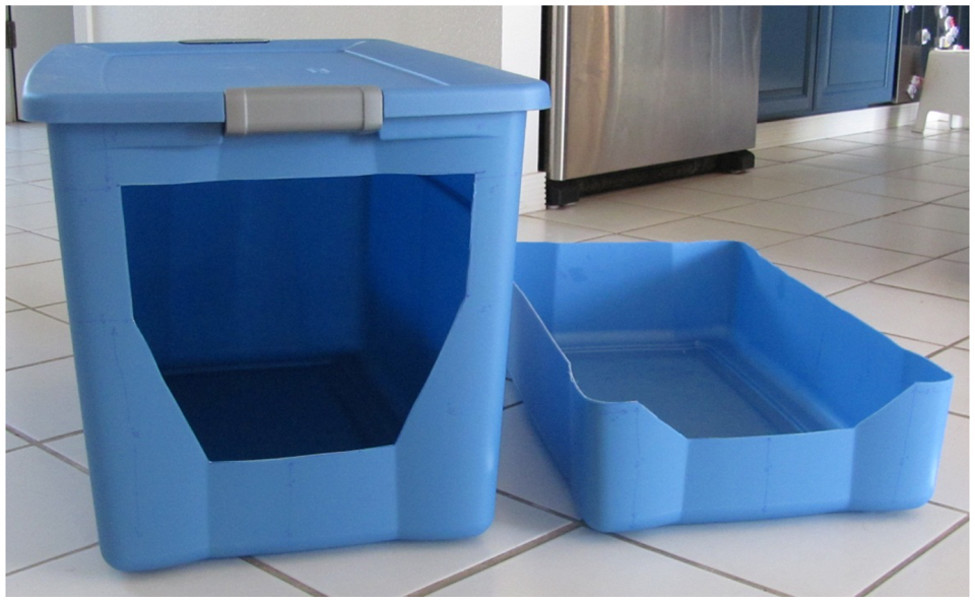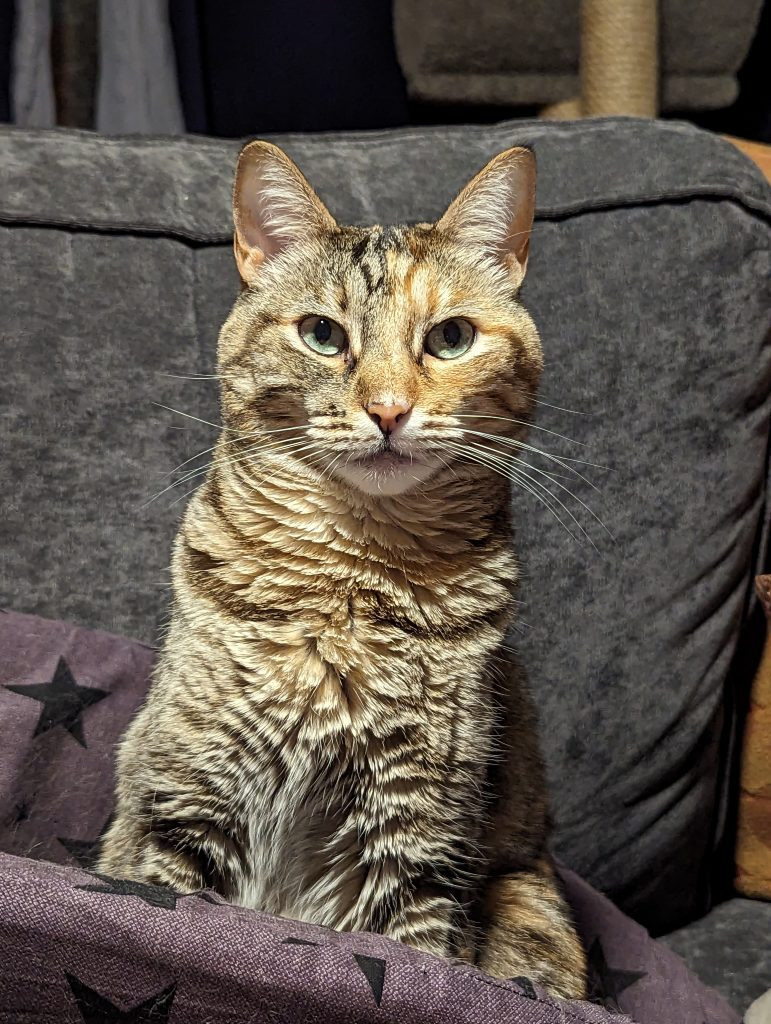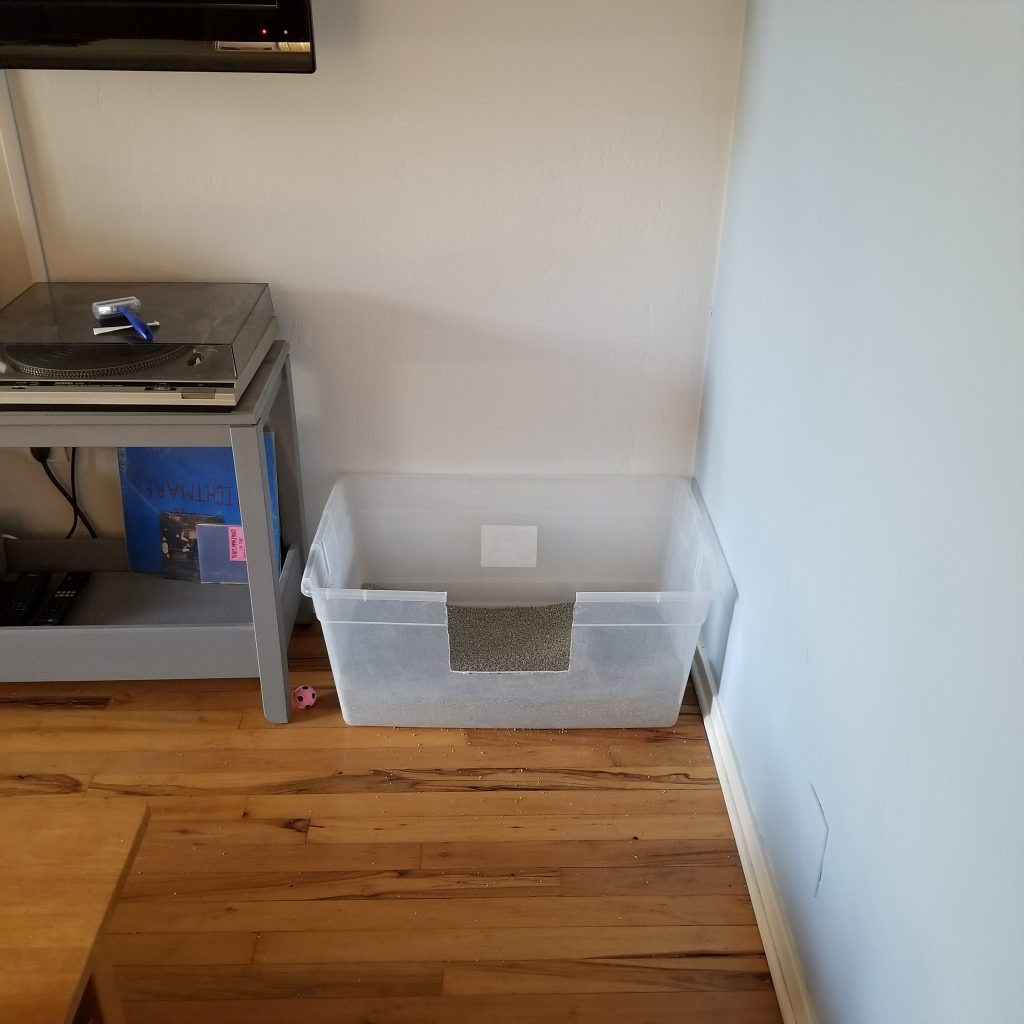The topic of cat litter boxes might seem mundane, but for cat owners and feline behavior experts, it’s a crucial aspect of cat care and well-being. Recently, while attending a continuing education presentation as part of my requirements as a Certified Cat Behavior Consultant and Certified Applied Animal Behaviorist, I was reminded of a common question: do cats prefer enclosed or open litter boxes? The presenter mentioned a 2013 study suggesting cats don’t have a strong preference for hooded litter boxes when factors like cleanliness and litter type are controlled.
This prompted me to revisit the study, “Litter box preference in domestic cats: covered versus uncovered,” and delve deeper into the topic of Enclosed Cat Litter Boxes. While many believe enclosed litter boxes offer privacy and odor control, there are several factors to consider before deciding if they are the right choice for your feline companion. It’s important to look beyond initial impressions and consider the research and practical implications for your cat’s comfort and litter box habits. Let’s explore what the science and experience tell us about enclosed cat litter boxes.
Understanding the Study on Litter Box Preference
In 2013, Dr. Emma Grigg and her team conducted a study to investigate cat litter box preferences, specifically comparing covered versus uncovered boxes. The study involved 27 healthy indoor cats without a history of litter box issues. For two weeks, each cat was provided with two litter boxes side-by-side: one enclosed litter box created from a large storage bin with a hooded top and an entrance, and one open litter box, also from a storage bin but with lower sides for easy access. Both boxes were filled with the same type of clumping clay litter. Cats from multi-cat households were separated to ensure individual preferences were observed.
 Cat litter box study setup with covered and uncovered boxes
Cat litter box study setup with covered and uncovered boxes
The study meticulously measured the amount of waste in each box daily to determine if cats showed a preference. Researchers weighed the bags of scooped waste from each type of box to quantify usage. Interestingly, the results indicated that, as a group, the cats did not demonstrate a significant preference for either the enclosed or open litter box. Statistically, the amount of waste deposited in both types of boxes was nearly identical. Further analysis at the individual cat level revealed that 19 out of 27 cats used both box types equally.
Why We Can’t Rush to Embrace Enclosed Litter Boxes
While the study suggests that cats, as a whole, don’t inherently dislike enclosed litter boxes under controlled conditions, it’s crucial to avoid oversimplifying the findings. Before concluding that enclosed cat litter boxes are universally acceptable, several important caveats need to be considered. These caveats highlight potential issues that can arise in real-world scenarios, differing significantly from the study’s controlled environment.
Caveat 1: Individual Cat Preferences Matter
Despite the overall group result showing no strong preference, the study did reveal that individual cats can have distinct preferences. Eight out of the 27 cats in the study displayed a strong preference: four favored enclosed litter boxes, while the other four preferred open ones.
 Cat showing preference for an open litter box
Cat showing preference for an open litter box
This underscores a critical point: scientific studies often generalize findings to a population, but individual variation is always present. In the context of litter boxes, this means that while most cats might be okay with either type, some will have a clear preference. The only way to determine your cat’s preference is to offer them a choice and observe their behavior. Forcing a cat into an enclosed litter box when they prefer open ones could lead to stress or litter box avoidance issues.
Caveat 2: Size Matters, Especially for Enclosed Boxes
The litter boxes used in the 2013 study were notably large storage bins – measuring 32.5 inches long, 19.75 inches wide, and 19 inches high. These dimensions are significantly larger than most commercially available enclosed litter boxes marketed for cats. For example, a common “large” enclosed litter box is roughly half the size of the boxes used in the study.
The study design intentionally used large boxes of equal size for both covered and uncovered options to eliminate size as a variable. However, this raises the question: would the results be different if standard-sized enclosed litter boxes were used? It’s possible that cats showed no preference in the study because the boxes were generously spacious. In contrast, a smaller, confined enclosed litter box might feel cramped and less appealing to many cats. Supporting this, a separate 2014 study indicated that cats generally prefer larger litter boxes. Anecdotally, larger cats (over 13 lbs) in the 2013 study showed a trend towards preferring uncovered boxes, possibly due to the perception of space.
Caveat 3: Multi-Cat Households and Security Concerns
The cats in the study were either single cats or isolated from other household cats during the two-week experiment. This isolation eliminates a significant real-world factor: the presence of other cats. One primary reason why many cat behaviorists, including myself, often advise against enclosed litter boxes is that they can restrict a cat’s visibility of their surroundings.
In a multi-cat household, a cat using an enclosed litter box might feel vulnerable. They cannot easily see if another cat is approaching, potentially leading to ambush or territorial disputes. Open litter boxes, on the other hand, offer a panoramic view, allowing cats to feel more secure and in control while using the facilities. This sense of security is crucial for reducing stress and promoting harmonious interactions between cats in the home.
Caveat 4: Cleaning Frequency and Odor Buildup
The 2013 study mandated daily scooping of all litter boxes by the participants. This consistent cleaning regimen likely contributed to the boxes being more appealing to the cats, regardless of whether they were enclosed or open. However, real-world cleaning habits often differ, especially with enclosed litter boxes.
Research suggests a concerning trend: owners of enclosed litter boxes tend to clean them less frequently. One study indicated that enclosed litter boxes are often cleaned only once every five days, compared to more frequent cleaning of open boxes. This infrequent cleaning can lead to odor buildup and unsanitary conditions within the enclosed space, making it less appealing for cats. A recent Italian study of cat owners also linked infrequent litter box scooping to house-soiling issues in cats. The perception that enclosed litter boxes contain odors might inadvertently lead to neglect in cleaning, creating a less desirable environment for cats and potentially causing litter box avoidance problems.
Key Takeaways: Enclosed Litter Boxes in Perspective
The 2013 study provides valuable insights, suggesting that when cats are provided with large litter boxes filled with clumping litter that is scooped daily, they don’t exhibit a universal aversion to enclosed boxes. However, it’s essential to interpret this finding cautiously and consider the caveats. Individual preferences exist, box size is critical, security in multi-cat homes is a concern, and the risk of reduced cleaning frequency with enclosed boxes is real.
In practice, the conditions of the study – extra-large boxes and daily cleaning – are not always met with typical household enclosed litter box setups. Therefore, while it’s inaccurate to claim cats universally hate enclosed litter boxes, it’s equally misleading to broadly recommend them based solely on this study. The “out of sight, out of mind” mentality regarding odor control with enclosed boxes can be detrimental if it translates to less frequent cleaning and a less appealing litter box for your cat.
Ten Tips for Excellent Cat Litter Box Management (Focusing on Open Boxes)
Given the potential drawbacks of enclosed litter boxes and the benefits of open designs, here are ten quick tips for creating optimal litter box conditions for your cat, primarily focusing on open litter box setups:
- Number of Boxes: Provide at least one more litter box than the number of cats in your household.
- Size Matters: Opt for large, open litter boxes to provide ample space. Storage bins, like those used in the study, can be excellent choices.
- Easy Access: Ensure the litter box is easy for your cat to enter and exit, especially for older cats or those with mobility issues. Low sides are preferable.
- Litter Choice: Use unscented, soft, clumping clay litter, which is generally preferred by cats.
- Avoid Liners: Refrain from using plastic litter box liners, as cats can dislike the feel and sound.
- Scoop Regularly: Scoop litter boxes at least once daily, ideally twice, to maintain cleanliness and odor control.
- Quiet and Safe Location: Place litter boxes in quiet, accessible locations that offer a sense of security and a view of the surroundings, avoiding corners or enclosed spaces.
- Separate Locations: Distribute litter boxes in different locations throughout the house, especially in multi-story homes or for multi-cat households, to reduce competition and increase accessibility.
- Distance from Resources: Place litter boxes away from your cat’s food and water bowls and sleeping areas, respecting their natural instincts for hygiene.
- Avoid Automated Boxes: Consider avoiding robot/automatic litter boxes and top-entry litter boxes, as these can sometimes deter cats or pose safety concerns.
 Open storage bin litter box for cats
Open storage bin litter box for cats
By prioritizing open, spacious, and clean litter box options and considering your cat’s individual needs and preferences, you can create a litter box environment that promotes their comfort, reduces stress, and minimizes the risk of litter box avoidance issues. While enclosed litter boxes might seem appealing for human convenience, focusing on your cat’s perspective is key to ensuring their long-term well-being and happiness.
References
Grigg, E. K., Pick, L., & Nibblett, B. (2013). Litter box preference in domestic cats: covered versus uncovered. Journal of Feline Medicine and Surgery, 15(4), 280-284.
Guy, N. C., Hopson, M., & Vanderstichel, R. (2014). Litterbox size preference in domestic cats (Felis catus). Journal of Veterinary Behavior, 9(2), 78-82.
Horwitz, D. F. (1997). Behavioral and environmental factors associated with elimination behavior problems in cats: a retrospective study. Applied Animal Behaviour Science, 52(1-2), 129-137.
Padalino, B., Zappaterra, M., Felici, M., Ricci-Bonot, C., Nanni Costa, L., Houpt, K., & Tateo, A. (2023). Factors associated with house-soiling in Italian cats. Journal of Feline Medicine and Surgery, 25(11), 1098612X231202482.
